Posted by Anita on 10.31.08 7:07 AM
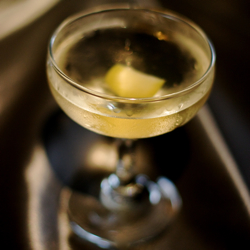 It’s been a good year or two for vintage cocktail buffs. After wandering in the metaphorical desert for so long in search of lost ingredients, our oddball desires have finally been vindicated. Every few months, a flurry of spirits are resurrected from the dustbins, opening up another chapter of classic recipes for experimentation.
It’s been a good year or two for vintage cocktail buffs. After wandering in the metaphorical desert for so long in search of lost ingredients, our oddball desires have finally been vindicated. Every few months, a flurry of spirits are resurrected from the dustbins, opening up another chapter of classic recipes for experimentation.
The latest no-longer-missing link is genever, also known in the old cocktail manuals as Holland gin. Of course, genever’s never really gone away. Industrious cocktail hounds have traveled to the Netherlands and brought back suitcases full of the juniper-laced spirit, or scoured the dusty shelves of liquor stores in search of the odd bottle or two. And the drink-nerdy among us will vouch that San Francisco’s very own Anchor Distilling — of Junipero gin and Old Potrero whiskey fame — produces their own genever-ish expression known as Genevieve.
But true Dutch-style genever has been rather thin on the ground in the States, at least until this fall. At the West Coast reintroduction of Bols Genever, I had a chance to chat with cocktail historian David Wondrich, most recently known as the author of the top-notch Jerry Thomas biography, Imbibe!.
Accustomed to a fair bit of cynicism in the professional cocktail world, I was struck by how genuinely excited Wondrich seems about this re-release.
“When you make some of the old [Thomas] drinks with London dry gin,” says Wondrich, “You take a sip and think ‘Hmm, tastes must have changed in the last 100 years’ and dump it out. But when you mix them with genever — which was the gin the bartenders were using in those days — the flavors suddenly click.” Running down the Thomas drinks roster with Wondrich, you get a sense of how a steady supply of good genever could change things dramatically for vintage cocktail aficionados; perhaps 19th-century cocktails will be the next big thing after all.
If you’re expecting genever to taste like a typical English gin, you’ll be taken aback; its flavor is closer to a young whiskey minus any of the woody notes, or perhaps a silver tequila without agave’s horse-blanket overtones. Though genever is commonly regarded as the forerunner of gin, most gin is little more than herb-infused vodka, redistilled to remove harsh flavors and cloudiness. Traditional genever starts out as maltwine, which in turn begins as a beer-like mash. Bearing all this in mind, Bols has taken pains to ensure that their genever is not labeled or marketed as a gin, instead pushing the government to recognize it as a distinct spirits class. On the other side of the Atlantic, genever benefits from a new European Union location-protected appellation — analgous to Champagne or Cognac or Roquefort — mandating production within the Netherlands and adjoining low-countries regions in order to bear the name.
(Oh, and about that name? It’s pronounced gen-EE-vrr, as opposed to JEN-eh-ver. Yes, I’ve been saying it wrong all these years, too, so don’t feel too bad.)
And oh my, what a gorgeous bottle. Bols tells us it’s the first use of smoked glass in a spirits bottle, manufactured using a technique that was not as easy to borrow from the perfume world as they had hoped. The logotype evokes the beautiful calligraphy found on the dark windows of old Dutch cafes.
Bols plied us with a parade of cocktails that afternoon, but my favorite — a preference shared by many of the folks I chatted with — was the Holland Gin Cocktail. Actually, Bols styles it the Improved Holland Gin Cock-Tail on their site, but since their recipe lacks any maraschino, I don’t think that’s actually the correct nomenclature. (I won’t bore you with the details here, but if you’re curious, I blathered about it elsewhere.) However you call it, this simply elegant combination showcases genever’s taste to a T, highlighting just how much you’re missing if you make many of the old drinks with plain-old gin.



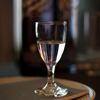

Holland Gin Cocktail
– Jerry Thomas, by way of David Wondrich
2-3 oz Bols Genever
2-3 dashes rich (2:1) simple syrup
2 dashes orange bitters
1 dash dry orange curaçao
Prepare a chilled coupe or cocktail glass by wetting the rim with a lemon slice. Stir the drink ingredients with large ice cubes and strain into the prepared glass. Cut a large coin-sized zest of lemon directly over the cocktail, spraying the oils over the drink and running the zest around the rim before dropping it in the drink.
Drink of the Week, drinks, recipes
5 Comments »




Posted by Anita on 10.19.08 1:05 PM
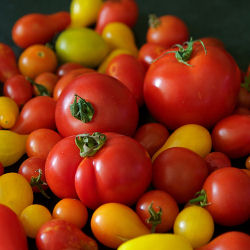 It’s more than a little embarrassing to admit that we’re on Day 19 of this year’s month-long Eat Local Challenge, and I haven’t even gotten our initial post up yet. Here’s the short version: We’re following the same guidelines we used for last winter’s Dark Days Eat Local Challenge, attempting to stick to them for every meal for the entire month of October. Of course, we do this pretty much all the time nowadays, with a few notable exceptions: Specialty ingredients for Thai and Chinese food, and the occasional non-locavore restaurant meal. But this month, we’re going for 100%, or as close to it as possible.
It’s more than a little embarrassing to admit that we’re on Day 19 of this year’s month-long Eat Local Challenge, and I haven’t even gotten our initial post up yet. Here’s the short version: We’re following the same guidelines we used for last winter’s Dark Days Eat Local Challenge, attempting to stick to them for every meal for the entire month of October. Of course, we do this pretty much all the time nowadays, with a few notable exceptions: Specialty ingredients for Thai and Chinese food, and the occasional non-locavore restaurant meal. But this month, we’re going for 100%, or as close to it as possible.
Suffice to say that life has gotten interesting over here — mostly in good ways — and that blogging was lower down on the totem pole than many other end-of-summer activities. We’ve enjoyed three weeks full of fun, including visits from good friends and trip to one of our favorite food cities in the world. We also spent a magical afternoon under the dappled sun at a picnic in the Santa Cruz Mountains, where the guest of honor was a whole roast pig accompanied by a beautiful buffet of side dishes, wines, and desserts (which were all way too good to call ‘potluck’).
During the week, we’ve been working like a pair of crazy people, but that doesn’t mean we haven’t been eating an amazing assortment of locally sourced meals. I won’t bore you with all the details, but I’m feeling incredibly blessed that we have locavore-friendly Range, Nopa, SPQR, and Beretta within easy shouting distance of home. And, of course, a freezer full of pasta sauce, sloppy joes, and other planned leftovers keep us fed when we’re too busy to cook.
 You might be surprised to hear that, amid all this culinary chaos, there’s one dish I’ve loved so much that I’ve made it not just once but three times. When I first spotted this gazpacho salad in a magazine that I’d brought along in my carry-on luggage, I couldn’t wait to get home and try it. Luckily, even though the season for larger heirloom varieties is winding down here, it’s still pretty easy to find cherry tomatoes at the market. I soon discovered that although blanching and peeling a whole pint of cherry tomatoes may sound too fussy for everyday meals, it’s actually a surprisingly quick process that’s well worth the effort.
You might be surprised to hear that, amid all this culinary chaos, there’s one dish I’ve loved so much that I’ve made it not just once but three times. When I first spotted this gazpacho salad in a magazine that I’d brought along in my carry-on luggage, I couldn’t wait to get home and try it. Luckily, even though the season for larger heirloom varieties is winding down here, it’s still pretty easy to find cherry tomatoes at the market. I soon discovered that although blanching and peeling a whole pint of cherry tomatoes may sound too fussy for everyday meals, it’s actually a surprisingly quick process that’s well worth the effort.
I’ve made a few changes to the original recipe — I’ve gone more savory than sweet in the tomato brine. Unable to source local sea beans (which I’ve since discovered at Far West Funghi in the Ferry Building), I substituted the tiniest haricots verts I could find. The next time, I left the beans out entirely, and it was equally delicious.
For my first attempt, I used a combination of baby tomatoes, including Sweet 100s, tiny Yellow Pears, and Sungolds. But plain-old cherry tomatoes — as the original recipe specifies — are a better choice. They’re far easier to peel, they all blanch at the same rate, and you don’t end up with yellow varieties muddied by the pulp from their red and orange pals. And, the larger size of the cherry tomatoes gives you a better chance to enjoy the salty, spicy burst of flavor you get with each one.
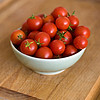
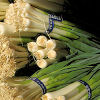
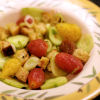
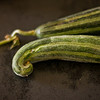
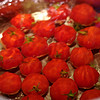
Gazpacho Salad
— adapted from Andy Nusser’s recipe, Food & Wine
– Brined tomatoes
1 pint cherry tomatoes
1 cup water
1 T sugar
1 T kosher salt
1 T red pepper flakes
1 (2 1/2-inch) cinnamon stick [Note: We use the softer, mellower Mexican canela]
– Salad
3 1/2-inch piece of baguette, cut into 1/2-inch dice (about 1 1/2 cups)
2 T plus 2 tsp extra-virgin olive oil
Salt and pepper
1/4 pound sea beans, or tiny haricots verts (optional)
1 cucumber, seeded (if necessary) and sliced 1/8-inch thick
2 scallions, thinly sliced
1 T sherry vinegar
To brine the tomatoes, bring a saucepan full of salted water to a boil. Prepare an ice-water bath and set near the stove.
Trim and blanch the beans or sea beans until just tender, and remove them with tongs or a strainer to the ice water bath. Remove and set aside on a towel to dry.
Blanch the tomatoes until the skins just begin to burst (15 to 30 seconds), and quickly remove them to the water bath to chill. Discard the blanching water.
In the same saucepan, simmer 1 cup of water, sugar, salt, red pepper, and cinnamon until the salt and sugar dissolves.
Drain and peel the tomatoes, and place them in a heat-proof bowl or Pyrex measuring cup. Strain the brine over the tomatoes. Brine the tomatoes until cool, about 40 minutes.
Meanwhile, preheat the oven to 350°. Cut the baguette into 1/2-inch cubes, and toss with 2 tsp of olive oil. Season with salt and pepper, and bake for 5-10 minutes, until lightly toasted.
In a medium bowl, toss the tomatoes, croutons, beans or sea beans, cucumber, scallions, vinegar and the remaining 2 T of olive oil. Season to taste, and serve.
Eat Local Challenge, locavore, recipes
10 Comments »




Posted by Cameron on 10.13.08 10:46 PM
 If there is a drink out there with fewer redeeming qualities than the Jäger Bomb, I can’t imagine what it is. Seriously folks, this drink is a bad idea. It tastes like cough syrup, it’s loaded with sugar, it packs enough caffeine to instantly add fifty points to your heart rate, and one of the main ingredients is made entirely of industrial chemicals.
If there is a drink out there with fewer redeeming qualities than the Jäger Bomb, I can’t imagine what it is. Seriously folks, this drink is a bad idea. It tastes like cough syrup, it’s loaded with sugar, it packs enough caffeine to instantly add fifty points to your heart rate, and one of the main ingredients is made entirely of industrial chemicals.
And so, in honor of Stevi’s Mixology Monday topic, Guilty Pleasures, I’m horrified to share with you that I’m completely, utterly addicted to the Trailer Trash Speedball, the Turbojäger, the Flying Hirsch, La Perla Negra: The Jäger Bomb.
I picked up this dirty little habit during my tour of duty as a guitar player for Seattle-area cover band Bad Alibi. For the first three months, I was fastidious about not drinking during performances. To tell the truth, for the first month, I was too panicked to even think about trying to play with a buzz on, which amused my band mates tremendously. They rarely got out of control, but every set was accompanied by beer and, to tell the truth, if our drummer wasn’t stoned, he couldn’t keep time at all.
Before the third and final set of the evening, one of the Alibi Boys would usually buy a round of Jäger Bombs. At first I declined to take part in the toxic trainwreck, but eventually I thought, “Don’t knock it if you haven’t tried it.â€
Like any destructive obsession, ritual is an important part of the Jäger Bomb. A shot of Jägermeister, an herbal liqueur, is served next to a pint glass containing half a can of Red Bull energy drink. You drop the shot glass into the pint glass and chug the mixture. Think of it as a millennial boilermaker.
As I climbed back on stage after my first ever Jäger Bomb, I immediately understood the appeal. Our third sets usually ran from midnight to 1:45am. Fridays weren’t too bad, but we always played two nights in a row and the third set on Saturday could be tough. No matter how big the crowd was, by 12:30, the entire room was completely blasted. By 1am, the energy would start to fall off, and by 1:30, the only people upright were usually us and the bar staff.
 This is all by way of saying that if you run around playing high voltage rock and roll late at night, the Jäger Bomb starts to make a lot of sense. One produces a high, fine, jittery feeling, and two will definitely get your motor running. Drink three in quick succession and you might as well hand the bartender your credit card and have them call the cops now, just to save time.
This is all by way of saying that if you run around playing high voltage rock and roll late at night, the Jäger Bomb starts to make a lot of sense. One produces a high, fine, jittery feeling, and two will definitely get your motor running. Drink three in quick succession and you might as well hand the bartender your credit card and have them call the cops now, just to save time.
After about a year and a half of playing 5 hours a night, 2 nights a week, 3 weekends a month in roadhouses anywhere from 45 minutes to 2 hours outside the city, all while holding down a full time corporate day job, my attitude towards rock godhead changed. The crowds were getting smaller, the drives were getting longer, and there is absolutely nothing fun about breaking down the stage at 2am. When I left the band, I mostly stopped drinking Jäger Bombs, as it’s not the sort of thing that you order in polite company.
But every now and then I let the inner Neanderthal come out to play. I drop the shot into the glass, and fire back the mixture. As the tight rush crawls up my spine, I close my eyes and remember when the lights flashed, the fog billowed, and—with one foot on the monitor and a snarl on my lips—I delivered the mighty rock thunder to a sea of dancing hooligans.
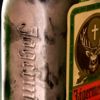

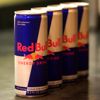
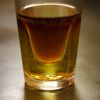

Jäger Bomb
4oz of energy drink (roughly 1/2 can of Red Bull)
1 shot Jägermeister
Pour the energy drink in a pint glass. Drop the shot in the pint glass and drink the whole mess down. Rock on.
bar culture, Drink of the Week, drinks, Mixology Monday, recipes, Seattle
13 Comments »




 It’s been a good year or two for vintage cocktail buffs. After wandering in the metaphorical desert for so long in search of lost ingredients, our oddball desires have finally been vindicated. Every few months, a flurry of spirits are resurrected from the dustbins, opening up another chapter of classic recipes for experimentation.
It’s been a good year or two for vintage cocktail buffs. After wandering in the metaphorical desert for so long in search of lost ingredients, our oddball desires have finally been vindicated. Every few months, a flurry of spirits are resurrected from the dustbins, opening up another chapter of classic recipes for experimentation.





















